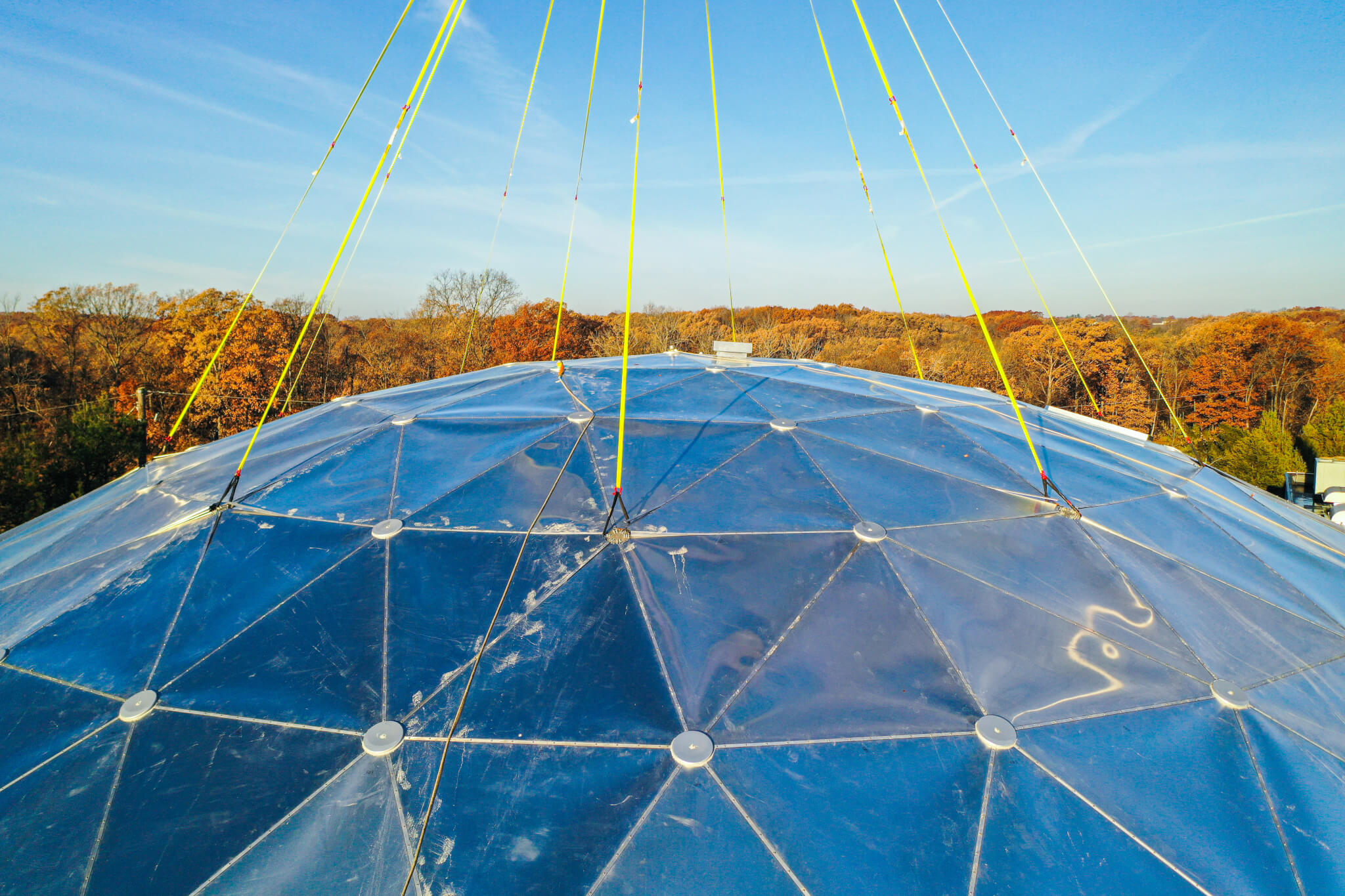
Below are some of the regulations that govern the design and maintenance of aboveground storage tank products. Below are links to a few of the organizations who provide these standards for the industry:
API 650 – Welded Tanks for Oil Storage: API Std 650 establishes minimum requirements for material, design, fabrication, erection, and testing for vertical, cylindrical, aboveground, closed- and open-top, welded carbon or stainless steel storage tanks in various sizes and capacities for internal pressures approximating atmospheric pressure (internal pressures not exceeding the weight of the roof plates), but a higher internal pressure is permitted when additional requirements are met. This Standard applies only to tanks whose entire bottom is uniformly supported and to tanks in non-refrigerated service that have a maximum design temperature of 93°C (200°F) or less.
API 653 – Tank Inspection, Repair, Alteration, and Reconstruction: Covers the inspection, repair, alteration, and reconstruction of steel aboveground storage tanks used in the petroleum and chemical industries. Provides the minimum requirements for maintaining the integrity of welded or riveted, nonrefrigerated, atmospheric pressure, aboveground storage tanks after they have been placed in service.
API 2000 – Venting Atmospheric and Low-pressure Storage Tanks: Covers the normal and emergency vapor venting requirements for aboveground liquid petroleum or petroleum products storage tanks and aboveground and underground refrigerated storage tanks, designed for operation at pressures from full vacuum through 103,4 kPa (ga) [15 psig]. Discussed in this International Standard are the causes of overpressure and vacuum; determination of venting requirements; means of venting; selection, and installation of venting devices; and testing and marking of relief devices.
Intended for tanks containing petroleum and petroleum products but it can also be applied to tanks containing other liquids; however, it is necessary to use sound engineering analysis and judgment whenever this International Standard is applied to other liquids.
This International Standard does not apply to external floating-roof tanks.
This edition of API Std 2000 is the identical national adoption of ISO 28300:2008, Petroleum, petrochemical and natural gas industries-Venting of atmospheric and low-pressure storage tanks.
API RP 545 – Lightning Protection of Aboveground Storage Tanks for Flammable or Combustible Liquids: API RP 545, Recommended Practice for Lightning Protection of Above Ground Storage Tanks for Flammable or Combustible Liquids, First Edition, replaces the requirements of API 2003 regarding lightning protection for preventing fires in storage tanks with flammable or combustible contents. This recommended practice (RP) provides guidance and information to assist owners/operators with lightning protection for tanks. This RP does not provide complete protection for all possible lightning stroke occurrences.
ISO 9001 – ISO 9001 sets out the criteria for a quality management system and is the only standard in the family that can be certified. ISO 9001 specifies requirements for a quality management system in an organization and helps ensure that customers get consistent, good-quality products and services.
ISO 9001 also helps customers:
a) have a certified supplier that can demonstrate their ability to consistently provide products and services that meet customer and applicable statutory and regulatory requirements, and
b) have a superior level of confidence in processes for improvement of quality systems and assurance of conformity to customer and applicable statutory and regulatory requirements.
Aluminum Design Manual: The Aluminum Association produces an Aluminum Design Manual, essential for all professionals who work with aluminum in structural applications.
AWWA D108-10 – Standard for Aluminum Dome Roofs for Water Storage Facilities: This standard establishes minimum criteria for the design, fabrication, and erection of structurally supported aluminum dome roofs. Aluminum dome roofs can be used on any size tank erected in accordance with AWWA standards. When this standard is specified, in the case of conflict between this standard and any other standard, the requirements of this standard shall govern.
NFPA 11 – Standard for Low, Medium and High-Expansion Foam: National Fire Protection Association Standard 11 is the standard that covers the design, installation, operation, testing and maintenance of low, medium and high expansion foam systems for fire protection. This standard does not specify where foam protection is required.
NFPA 30 – Flammable and Combustible Liquids Code: National Fire Protection Association Standard 30 is enforceable under OSHA and many state and local regulations. NFPA 30 provides safeguards to reduce the hazards associated with the storage, handling and use of flammable and combustible liquids.
NFPA 780 Standard for the Installation of Lightning Protection Systems: National Fire Protection Association Standard 780 provides lightning protection system installation requirements to safeguard people and property from the risk and related hazards associated with lightning exposure.
Below is a list of common regulatory agencies and written regulations.
AP 42, Fifth Edition, Volume 1: Chapter 7 Liquid Storage Tanks
California BAAQMD – Bay Area Quality Management District
California SCAQMD – South Coast Air Quality Management District
CFR 40 Part 60 Subpart K – Standards of performance for storage vessels for petroleum liquids for which construction, reconstruction, or modification commenced after June 11 1973 and prior to May 19, 1978.
CFR Part 60 Subpart Ka – Standards of performance for storage vessels for petroleum liquids for which construction, reconstruction or modification commenced after May 18, 1978, and prior to July 23, 1984.
CFR Part 60 Subpart Kb – Standards of performance for volatile organic liquid storage vessels (Including petroleum liquid storage vessels) for which construction, reconstruction or modification commenced after July 23, 1984.
EEMUA – The Engineering Equipment & Materials Users’ Association
EPA – Environmental Protection Agency
NJ RACT – New Jersey Department of Environmental Protection – Bureau of Air Quality Planning
NJ RACT – N.J.A.C. 7:27-16 – Control and Prohibition of Air Pollution By Volatile Organic Compounds
PA Department of Environmental Protection – Air Quality Regulations
PA Department of Environmental Protection – Storage Tank and Spill Prevention Act
Texas TCEQ – Texas Commission on Environmental Quality